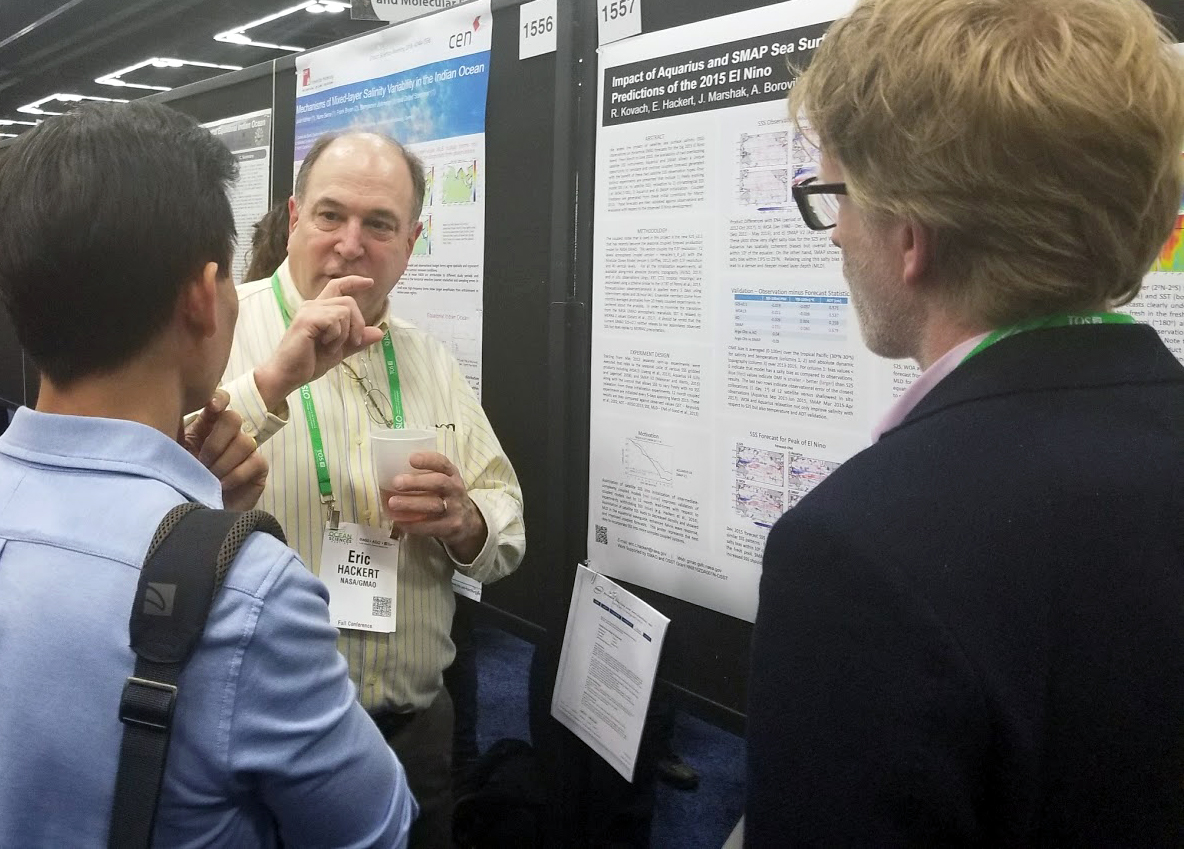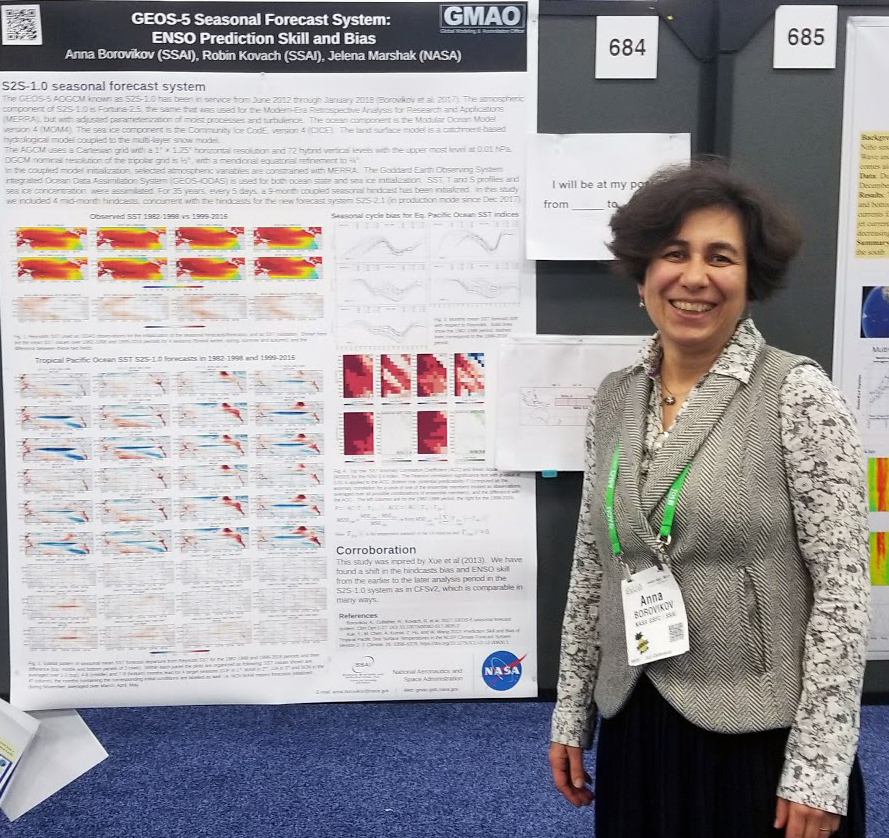GMAO Participates in the 2018 Ocean Sciences Meeting in Oregon’s City of Roses
03.10.2018
Within the shadow of Mt. Hood, GMAO staff traveled to the “City of Roses” in Portland, OR to attend the 2018 Ocean Sciences Meeting (Feb 12-16, 2018).
Monday started with the session entitled “Ocean Salinity and Its Role in Ocean Dynamics and the Water Cycle”. In this oral session, Eric Hackert (with Co-I Robin Kovach) presented their results demonstrating the usefulness of satellite sea surface salinity (SSS) above and beyond what assimilation of conventional data can provide. In addition, long-lead ENSO forecasts (8-12 months) were significantly improved when SMAP (Soil Moisture/Active Passive) SSS was adjusted to match Aquarius SSS. These results foreshadow the potential to link Aquarius to SMAP satellite SSS for climate data records.

Photo: Eric Hackert discusses impact of AQUARIUS and SMAP on ENSO prediction with T. LEE (JPL and lead on SSS White Paper for Decadal Survey - left) AND R. Sabia (right - of SMOS/ESA).
Later that same day in the poster session, Kovach (with Hackert, Jelena Marshak, Anna Borovikov, and Andrea Molod) presented results of improvements to the production of GMAO Seasonal Forecast System (S2S-v2.1) coupled system by Aquarius SSS improved not only the salinity in the coupled reanalysis but also near-surface temperature and sea level. Coupled forecasts of the 2015 El Niño generated using these Aquarius results demonstrated the benefit of incorporating satellite SSS into coupled forecast prediction systems. On Wednesday, Cecile Rousseaux (with Co-I Watson Gregg) presented their results on the assessment of the chlorophyll forecast in the Equatorial Pacific. Their results showed reasonable skills in forecasting the chlorophyll concentration in this region and suggested that this forecast may be beneficial in supporting field sampling mission design, such as the NASA Export Processes in the Ocean from RemoTe Sensing (EXPORTS) mission in August 2018.
Thursday afternoon, Borovikov presented a poster (co-authored by Kovach and Marshak) on the GMAO Seasonal Forecast System (S2S-1.0) ENSO biases and skills. This study contrasted the system’s ENSO hindcasts of the earlier (1981-1998) and later (1999-2016) periods following a paper by Xue et al. (2013) analyzing the performance of the CFSv2 seasonal forecast system. The apparent degradation of the ENSO indices prediction during the later period for long-lead forecasts is present in both systems. This may help with the attribution of the equatorial Pacific SST predictability limits and the improvement in the next version of the seasonal forecast system (S2S-3 and beyond).

Photo: Anna Borovikov is ready to present her poster “GEOS-5 Seasonal Forecast System: ENSO Prediction Skill and Bias”, co-authored by Robin Kovach and Jelena Marshak.
There were plenty of opportunities during the meeting to interact with colleagues from around the world — to discuss potential collaborations; to share challenges; to answer questions and exchange ideas with researchers who either work with or plan to work with GMAO ocean re-analysis and seasonal forecast data; and to learn about new observations that can be incorporated into ODAS or used for validation.
Borovikov took advantage of several workshops that were offered on Sunday prior to the beginning of main sessions. These were designed to help scientists improve their presentation and communication skills, making their participation in educational and outreach activities more effective, and encourage interdisciplinary interactions.

